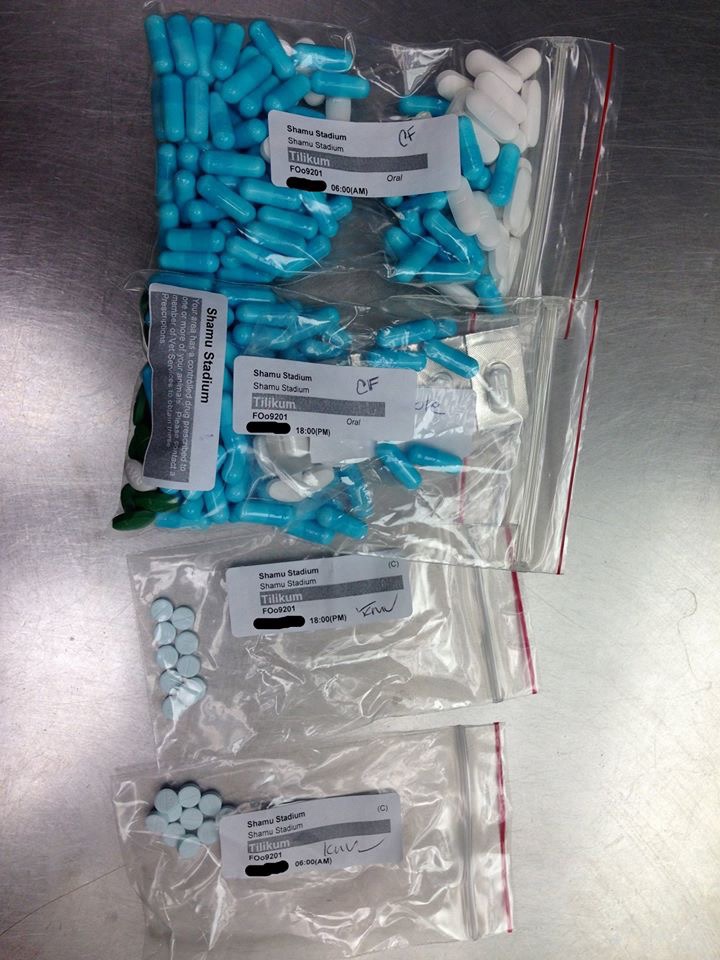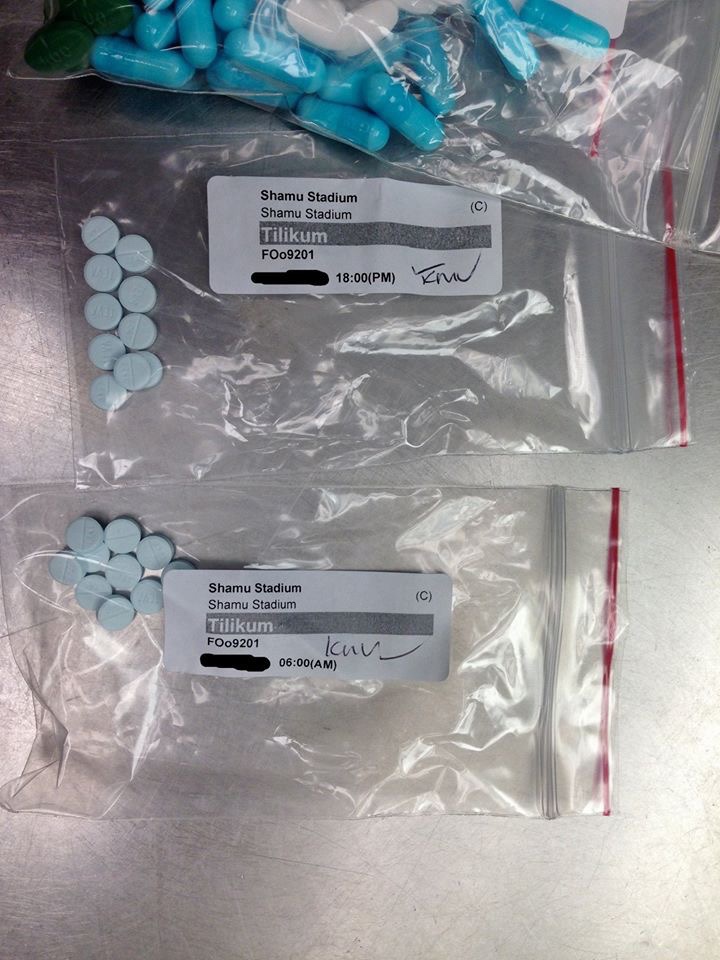With SeaWorld about to battle it out in court over claims that it continues to make false and misleading statements about the health and welfare of its captive orcas, a disturbing series of photos have been released to the public exposing excessive aggression, horrific injuries, abnormal behaviour, rampant drug-use and avoidable death at SeaWorld Orlando.
Kayla and Kalina
Among the most shocking revelations was one detailing severe aggression between Kayla and Kalina – two adult female killer whales. While both have since passed away, the pair shared a very difficult, volatile relationship since meeting in 2006, when Kayla was transferred to the Orlando park. Trainers initially paired Kayla with Kalina while she settled in, believing Kalina’s gentle and submissive nature would ease the transition. However, the pair did not mix well and their interactions would often end in brutal fights.
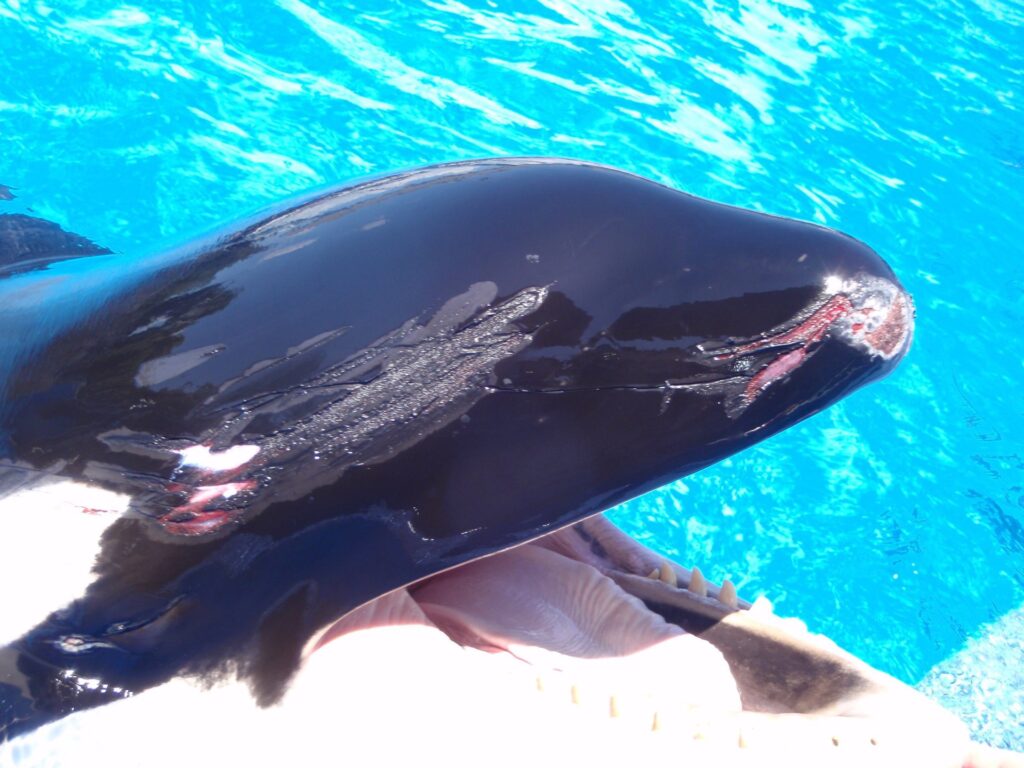
Severe rake-marks inflicted by Kayla on Kalina’s rostrum and head.
On one occasion, Kayla viciously raked Kalina, removing her skin and sub-dermal layer of tissue from around her head, but Kayla wasn’t always left unscathed from these fights – she broke her jaw during one altercation, likely the result of Kalina hitting her with her tail flukes. The break must’ve been severe as Kayla was on antibiotics for a significant time after this injury, although the exact amount of time hasn’t been disclosed.
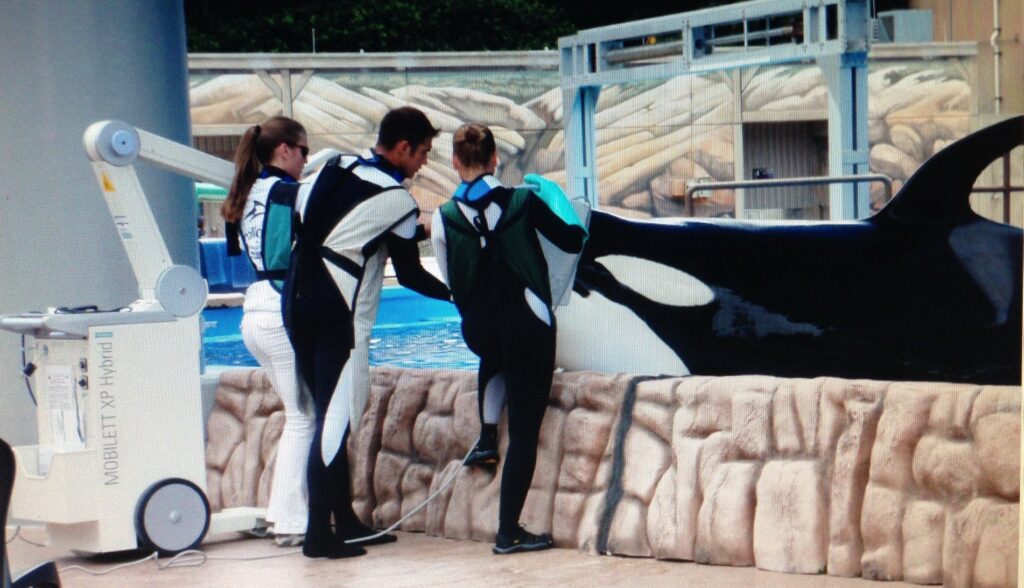
Kayla receiving an x-ray to assess her broken jaw.
On another occasion, in June 2010, a vicious fight between the pair left Kalina with a severe laceration above her right eye. While she healed from this injury, Kalina would die just three months later of Acute Bacterial Septicaemia, otherwise known as sepsis or blood poisoning. It’s believed Kayla may have transferred harmful bacteria to Kalina when she inflicted the laceration above her eye, ultimately killing her.
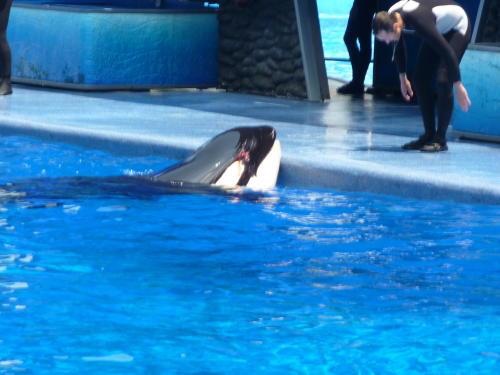
Deep laceration above Kalina’s eye following a fight with Kayla in June 2010.
SeaWorld would lead you to believe that this aggression is normal. When one of Kayla and Kalina’s fights interrupted a show in 2010, trainers put it down to play. However, their behaviour was far from normal, and it definitely was not play. In the wild, orcas live in family units and have strong social bonds which may last for life. While aggression is a natural part of their social interactions, it is often short-lived and no grievous harm is inflicted as their social rules prohibit serious violence against one another. When fights do occur, targeted individuals have an entire ocean to flee to.
In Kayla and Kalina’s case, they were two unrelated individuals forced to share the tight confines of a concrete tank. Their frustration boiled into excessive aggression and ultimately severe acts of violence. SeaWorld hid Kayla’s broken jaw from the public and masked her problematic relationship with Kalina with fabrications of the truth. It’s worth mentioning housing animals that are incompatible with one another in the same enclosure violates Section 3. 109 of the Animal Welfare Act – a federal law that SeaWorld has violated repeatedly in the past.
Oral Degradation
The whistleblower photos also shed light on the severity of oral degradation in captivity. One photo revealed the size of drill bit used to drill the orca’s teeth; another showed the sorry state of Kalina’s teeth having undergone this procedure multiple times.
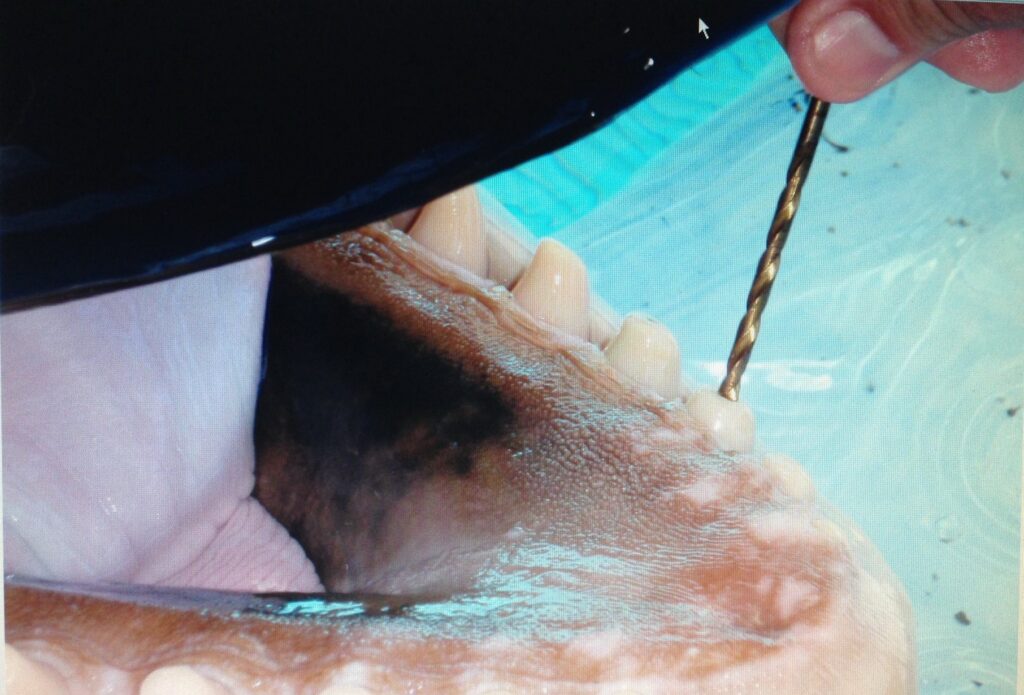
Drill bit used to perform pulpotomies on orca teeth.
In confinement, it’s common for separated orcas to bite down on horizontal metal bars, or to “jaw-pop” through the gates as they display aggression at each other – for example, Kayla would often display this behaviour when she was separated from Kalina via a gate. It’s also common for under-stimulated and bored animals to “chew” metal bars and mouth concrete pool corners, like the main stages and slide outs. While orca teeth are strong enough to last a lifetime, they were not built to withstand steel and concrete so their teeth fracture and break following these displays. This breakage leaves the pulp of some teeth exposed which allows for decay, causing a cavity that then leads to food plugging. If left untreated the orcas own immune system will create inflammation and eventually a focus for systemic infection.
To try and avoid this, a hole is drilled into the damaged tooth using a variable speed drill (known as a pulpotomy) and is then flushed three times day. The whole procedure is performed without pain relief causing the orcas to suffer in great discomfort. During these procedures, orcas often squeal, shudder and sink away from the person performing the procedure. The thought of being subjected to this procedure without pain relief is disturbing, yet for SeaWorld’s orcas (and many others around the world) it’s a common occurrence.
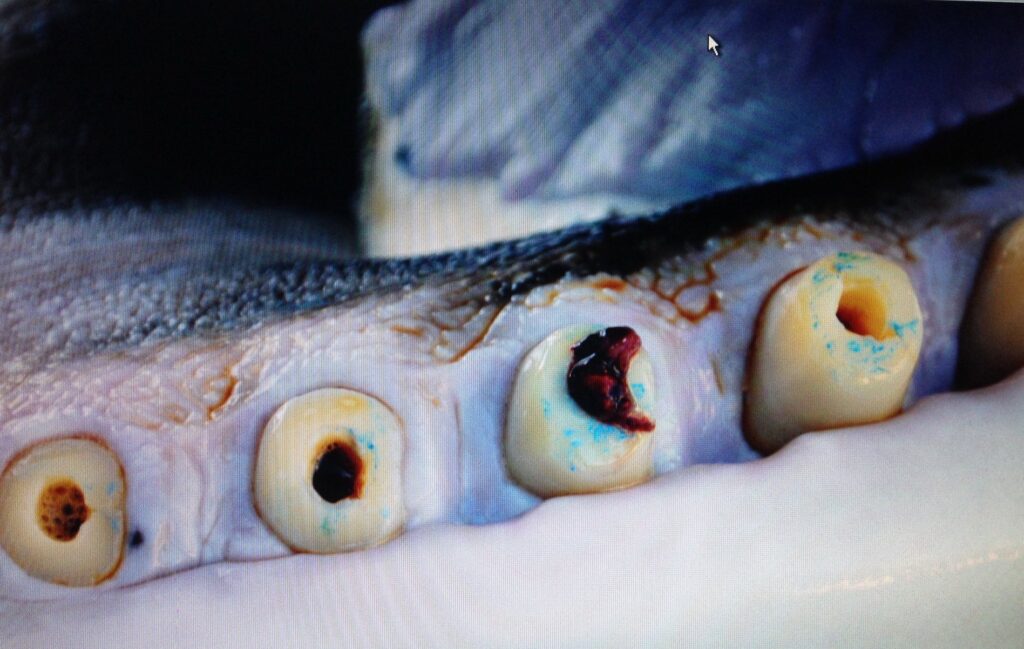
Kalina’s drilled teeth. Blue paint is visible as is a piece of blood-soaked orca skin stuck in her tooth.
Looking closely at Kalina’s teeth, scrapings of blue paint is visible – undeniable evidence of her tendency to chew on tank walls – and so is a piece of blood-soaked orca skin (belonging to Kayla, no doubt) embedded in her tooth. These whales are breaking their teeth to bare the toll of captivity yet SeaWorld continues to tell its customers that they’re thriving. What do you think?
Repetitive Regurgitation
The photos also draw attention to the frequent occurrence of a highly abnormal behaviour: regurgitation. Following feeding sessions, captive orcas have been seen to regurgitate their food and play with it. Although this may provide the orca with some stimulation, obsessive regurgitation can lead to health problems as the corrosiveness of stomach acid can damage the lining of the oesophagus (causing oesophageal ulceration) and already worn teeth.
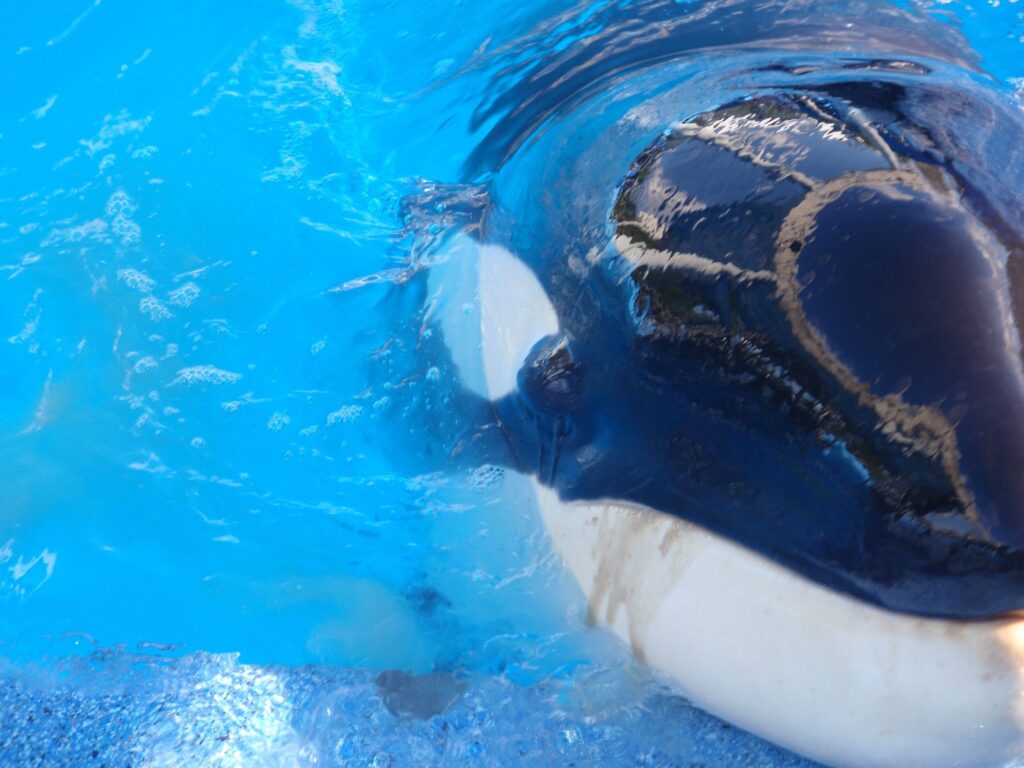
The regurgitated contents of this orca’s stomach spill from its mouth.
SeaWorld’s own veterinarians have linked the occurrence of this behaviour to the inadequate and unsuitable conditions of their confinement, stating it “may be seen in young cetaceans related to boredom, illness, decease in a previous level of interaction, [and] social instability” (Walsh et al. 2016). Further still, they noted those who display this behaviour are often “considered “loners”, incompatible, placed outside the normal social structure by age or lack of suitable peers.”
With one photo showing an orca with regurgitated food spilling from the side of its mouth, and another showing the amount of vomit scooped out the pool drains each day, it’s clear vomiting is a notable problem. According to John Hargrove, a former senior trainer, all of the whales at SeaWorld Orlando, SeaWorld San Antonio and Marineland Antibes frequently regurgitated their food. What makes it so widespread is that it is often mimicked. When Kayla arrived at SeaWorld Orlando in 2006 and displayed this behaviour the juveniles of the pod copied her. Trua, Malia and Nalani all lost weight drastically once they started regurgitating.
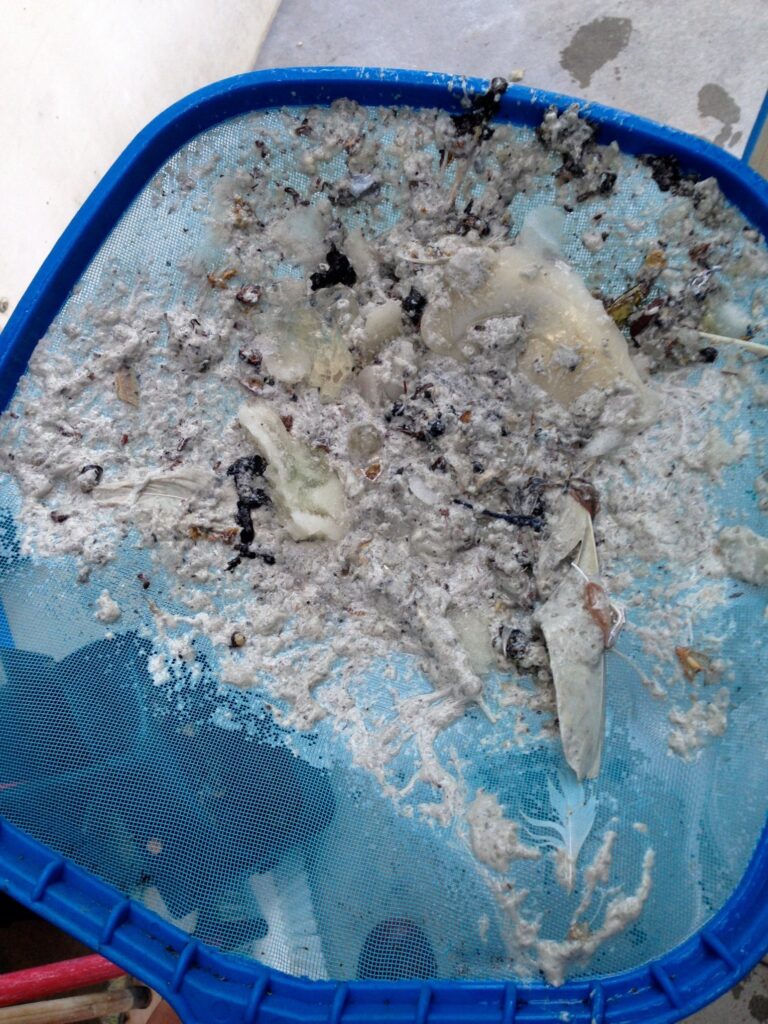
An example of the regurgitated food that is scooped out of the pools and drains each day.
While some may brush this behaviour off as a form of play, SeaWorld’s veterinarians appear greatly concerned, and with good reason, writing: “if regurgitation is allowed to persist the condition can lead to severe weight loss, immune system compromise, increased susceptibility to disease, and death”.
It begs to question how anyone can believe these animals thrive in captivity when they are reduced to playing with their own vomit at a clear detriment to their health.
Source: Walsh MT, Friday RB, Johnson AB, Messinger D. 2016. Regurgitation in cetaceans: Medical implications. IAAAM 47th Conference of the International Association for Aquatic Animal Medicine May 21–26, 2016 Hosted by Virginia Aquarium & Marine Science Center, Virginia Beach, Virginia, USA.)
Taima & Tilikum
Perhaps the most shocking photo out of the whole photo set was one depicting 20-year-old Taima suffering from a prolapsed uterus (protrusion of the uterus out of the vaginal canal) during her fourth and final birth. While the calf was stillborn, Taima suffered a strenuous labour that lasted almost an entire day. She experienced great difficulty trying to expel the calf and then died on June 6, 2010 from birthing complications, including Peracute Uterine Prolapse. The photo underneath reveals the hell she went through – she must’ve been in excruciating pain.
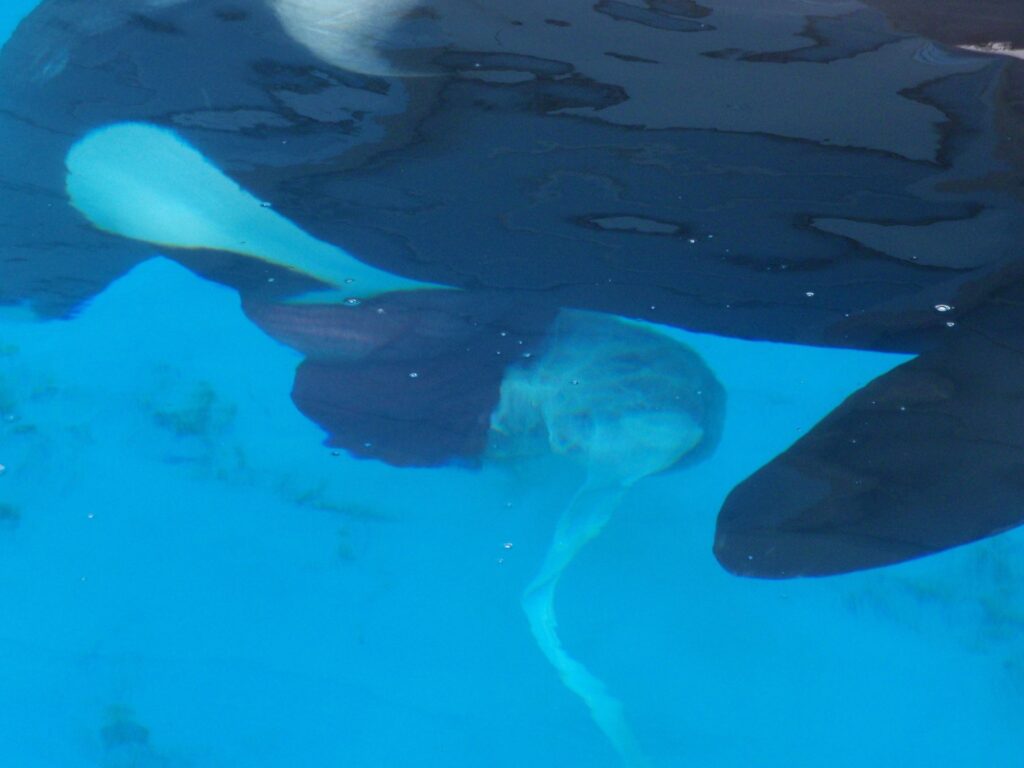
Taima suffering the consequences of a prolapsed uterus.
Taima’s untimely death could’ve been avoided. Uterine prolapse is caused by the weakening of the various muscles, tissues and ligaments that hold the uterus in place inside the pelvis. Pregnancy, childbirth and difficult labours all weaken these muscles and consequently cause prolapse. SeaWorld were more than aware of how strenuous and dangerous pregnancy can be – Taima’s own mother, Gudrun, died while trying to expel a stillborn calf, in an eerily similar manner to how her daughter would die years later – yet they carelessly bred Taima five times in 12 years. It’s unsurprising she struggled to give birth to her last calf after years of successive pregnancies. If SeaWorld hadn’t treated Taima like a breeding machine since she was 8 years old (when she first gave birth) it’s likely she would still be alive today.
Another harsh truth exposed by the whislteblower photos was the immense amount of medication SeaWorld’s late bull orca, Tilikum, was given to treat illness. Tilikum suffered from a bacterial lung infection for about a year before he died in January 2017. Looking at the photos, it’s not far-fetched to presume antibiotic resistance (caused by being prescribed antibiotics too frequently) played a part in his death.
Tilikum’s daily medications. The second and third photos show his daily dosage of Valium, an anti-psychotic drug used to try and reduce his aggression. Right click and open in a new tab to expand the photos.
Tilikum was also kept on anti-psychotic drugs, such as Valium, to try and control his aggression. He was given 20 pills each day to try and subdue him. It begs to question how often Tilikum displayed aggression towards his trainers for them to result to drugging him every day for their own safety.
Inappropriate Handling
While SeaWorld has made countless claims over the years to try and mask its exploitation of the ocean’s top predator as something wholeheartedly beneficial, one claim it continues to maintain is that it forms a connection between animal and visitor, teaching the thousands of people that pour through its gates each day to love and respect wildlife. The effectiveness of this message seems entirely void when it fails to extend to SeaWorld’s own trainers.
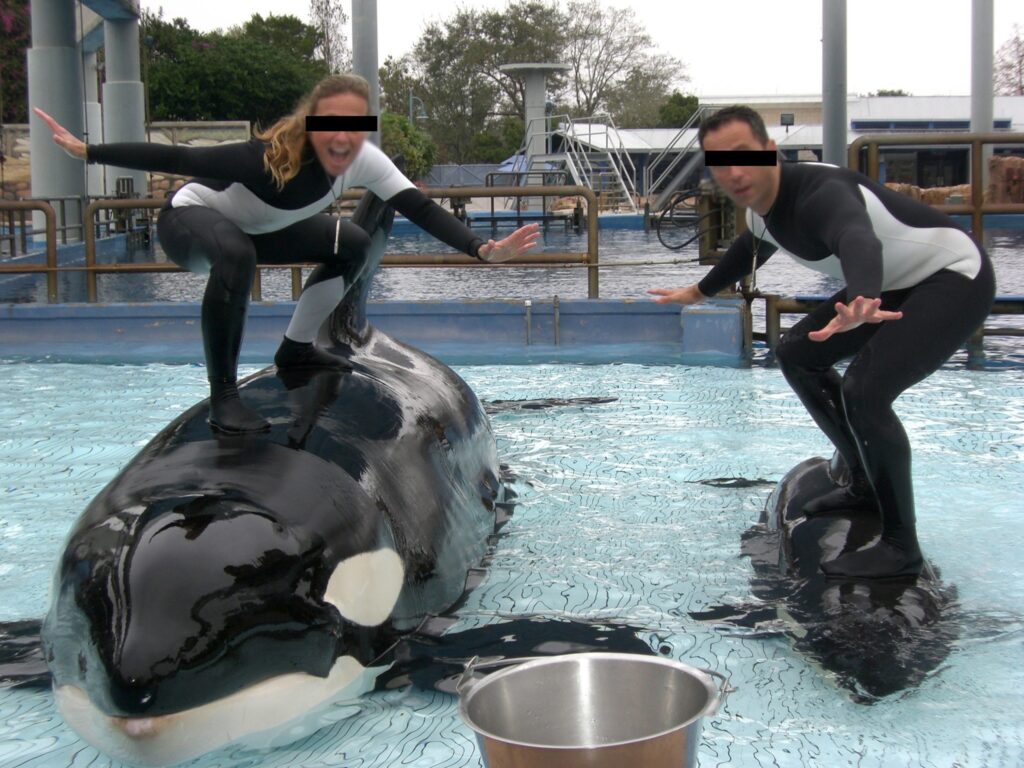
Two senior trainers stand on two beached orcas – Taima and her 18-month-old calf, Malia.
Seen in the photo, two trainers stand on the backs of two orcas (Taima and Malia) beached in the medical pool, posing and smiling for a photo. You may notice how large the male trainer may seem – he’s standing on an 18-month-old calf, pushing her head almost entirely under the water. At such a young age, the cervical vertebrae in Malia’s neck and the thoracic vertebrae in her back wouldn’t have been fully fused or formed and would’ve been susceptible to irreversible damage.
While it was a common sight to see trainers standing on the whale’s rostrums and backs during performances, these stunts were only performed when the whale’s weight was supported by water. Beached in the medical pool, Taima and Malia lack this support and are vulnerable to the pressure of their own weight, as well as the additional weight of their trainers. While it wasn’t an immediate threat for Taima and Malia, a cetacean’s own weight will begin to crush its internal organs if left beached for a prolonged period of time. Short term, it must’ve been very uncomfortable for the pair – something these trainers should’ve considered before prolonging their suffering further by taking photos.
Potential harm to the animals aside, perhaps the most alarming aspect of this photo is how comfortable the trainers seem to be with disrespecting their animals – comfortable enough to pose for a photo nonetheless – suggesting this wasn’t a one-time occurrence but rather something commonplace amongst trainers…
Additional photos:
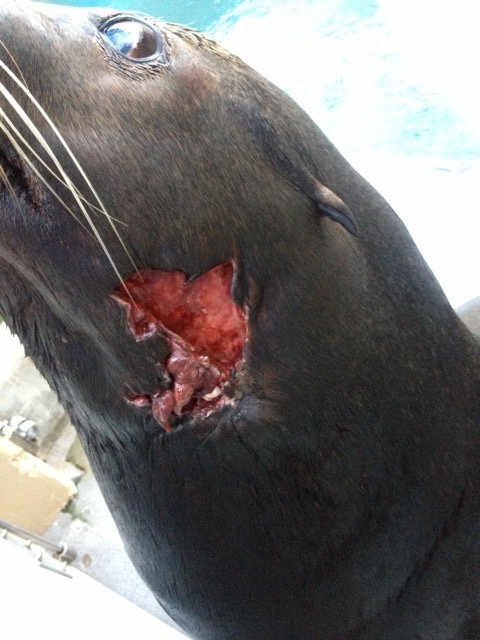
A California sea lion with a horrific bite wound inflicted by another sea lion in SeaWorld Orlando’s overcrowded pinniped enclosure.
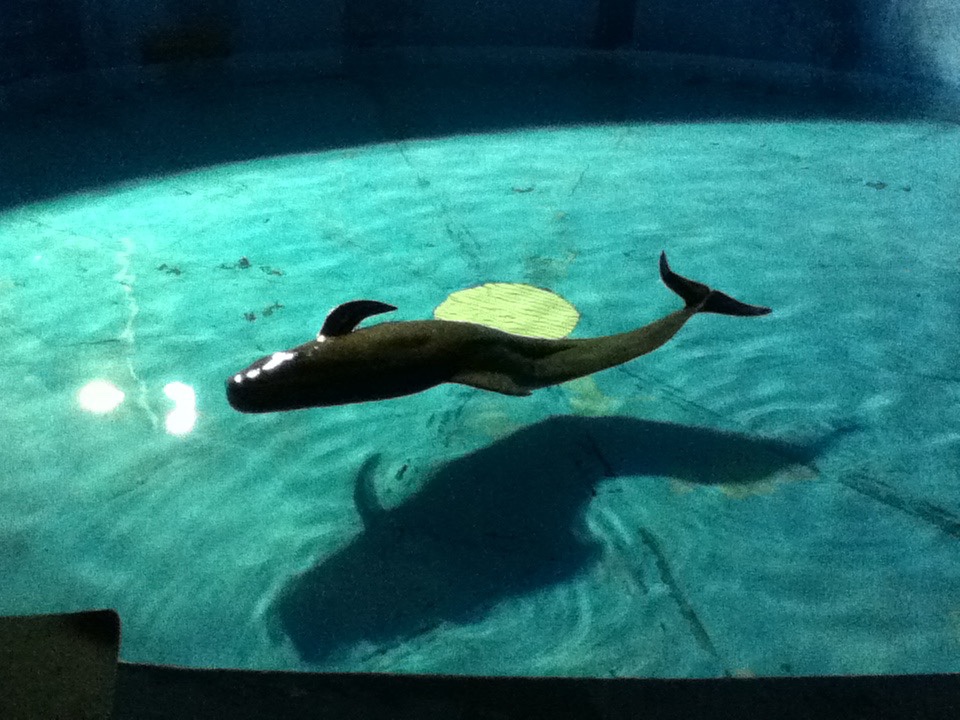
Hunzy, a rescued pilot whale with severe scoliosis and limited mobility, spent two years in her tiny pool prior to her death.
